Posted by Elena del Valle on November 6, 2015

Twitter Power 3.0
Photo: Wiley
Joel Comm and Dave Taylor believe Twitter is a powerful business tool, that viral content doesn’t happen by accident, and that videos and photos are necessary to engage effectively with customers on the social media site. In the updated edition of their book, Twitter Power 3.0: How to Dominate Your Market One Tweet at a Time (Wiley, $20) published this year they discuss measurement, case studies and their strategies to connect on Twitter, among other Twitter related topics.
They are convinced that the power of Twitter is the possibility of immediate feedback and its broad reach. At the end of the book, they share a short list of people they follow on Twitter and recommend to readers.
“Not really,” Taylor said by email when asked if there were any unexpected findings for the new edition. “Twitter is a pretty straightforward system and while things like sponsored hashtags are relatively new, the basic idea of engagement remains the same as it was from the early days both of Twitter and social media in general. If you use it to broadcast, it’s not interesting or successful.”
The 272-page softcover book is divided into 12 chapters that address social media in general, Twitter’s popularity, first steps as well as setup and design, finding followers, communicating with customers and teams on Twitter, brand building on Twitter, using Twitter to influence the behavior of followers, making money on Twitter, and third party tools.
”
Twitter is definitely trying to find its way, but Joel and I are confident that the future is bright: It’s a simple, popular service with a realtime aspect that’s unlike any other popular social media service and widespread adoption in the media. We’ll all get to see how that plays out!” Taylor said in reply to a question about the future of Twitter given recent news of staff layoffs and profitability uncertainty.
Comm, a serial entrepreneur, is the author of ten other books, including The AdSense, a New York Times bestselling title. He didn’t reply to email questions. Taylor has launched four internet startups, written 22 books and is the host AskDaveTaylor.com.
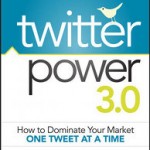
Click to buy Twitter Power 3.0
Comments:
Filed Under: Books
Posted by Elena del Valle on October 21, 2015

Vitamania*
A 2011 Journal of Nutrition report indicates most consumers rely on foods fortified or enriched with synthetic vitamins for their essential micro nutrient intake. That is not surprising given that most of the vitamins we consume today are synthetic, according to Catherine Price, author, Vitamania. What may surprise many is that while in the early years of synthetic vitamin development the United States played an important role, today most of the market is under the corporate thumb of two European companies. And the majority of their production facilities are in China.
Last week in my note about Vitamania (see Journalist believes devotion to supplements keeps us from good health) I indicated Catherine Price, the author, had declined to answer questions. It had been two weeks since I had sent her questions and the deadline for replies was long past. Saturday, October 17, 2015, I received an answer.

Catherine Price, author, Vitamania*
Below are the questions and answers:
HispanicMPR.com
What was the main reason you wrote the book (other than the question your husband asked you in Lithuania)?
Catherine Price:
I wanted to gain a better understanding of a subject I took for granted. I also was curious about how the story of vitamins might change the way we should think about nutrition as a whole.
HispanicMPR.com:
In one sentence how do you define a vitamin or a nutritional supplement?
Catherine Price:
(Sorry, I can’t do it in one sentence!)
There’s no chemical definition for a vitamin — the word was coined in 1911 before they had been chemically isolated, and it turns out they’re not all part of the same chemical family. The public tends to define vitamins (of which there are only 13) as a chemical that we need in very tiny amounts, and that we usually get from our diets, that is necessary to prevent a specific vitamin deficiency disease, but there exceptions to each of these statements.
A dietary supplement (that’s the official term, not nutritional supplement) is defined by the Food and Drug Administration (which is the administration responsible for regulating America’s supplements) as “a product intended for ingestion that contains a ‘dietary ingredient’ intended to add further nutritional value to (supplement) the diet.”
There’s more info on what substances that definition includes here: fda.gov/AboutFDA/Transparency/Basics/ucm195635.htm
HispanicMPR.com:
Are you opposed to vitamins?
Catherine Price:
To clarify: we have a habit of using the word “vitamin” to refer both to the 13 essential vitamins (A, C, D, E, K and the 8 B vitamins) and to the much broader category of dietary supplements (there are some 85,000 dietary supplement products on the market in America). There’s no way you could oppose the 13 vitamins — we need them in order to survive! But I don’t think that most people need to take them as pills. As for dietary supplements, I’m not necessarily for or against them, but I have a lot of concerns about their safety, efficacy, and the authenticity of their ingredients.
HispanicMPR.com:
What was the greatest challenge to the book project?
Catherine Price:
A lot of the questions I thought were simple (what is a vitamin, how do vitamins work, what do they do, how much of each do we need) do not have answers.
HispanicMPR.com:
What was the biggest surprise?
Catherine Price:
That was also probably the biggest surprise. But once I got over the terror of not having solid answers to my questions, I realized that we should use this uncertainty as a lesson: vitamins are a great example of how little we actually understand about human nutrition. Their story has taught me to stop obsessing about the minutiae of nutrition, and to just eat naturally nutrient-dense food.
*Photos: Penguin Press, Sara Remington
Posted by Elena del Valle on October 16, 2015

Vitamania
Photos: Penguin Press, Sara Remington
While it is true that there are 13 chemicals or vitamins essential for good health. And that the lack of one or more of those compounds result in the death of millions of people around the world. Catherine Price, a Philadelphia journalist, is convinced that the word vitamin has become an easy replacement in our vocabulary for healthy, and that “the very power of vitamins makes them a double-edged sword.”
She believes despite scientific uncertainty about vitamins many people use vitamins as a sort of health insurance that can ensure we live long and healthy lives. In Vitamania: Our Obsessive Quest For Nutritional Perfection (Penguin Press, $27.95), a 318-page hardcover book published this year, she explains the reasons behind her thinking.

Catherine Price, author, Vitamania
Price, who did not respond to questions via her publishing company, points out that the further removed from its natural state food is the lower its nutritional content. Eating a broad diet of nutritionally dense foods, including vegetables and fruits, and staying away from heavily processed foods and sugary beverages may be the best approach to acquiring all the vitamins we require, she says in the Epilogue. She strives to challenge readers to reevaluate their own beliefs about vitamins, nutrition and food. She suggests that while nutrition is complex eating healthy in a pleasurable and scientific way is easy.

Click to buy Vitamania
Comments:
Filed Under: Books
Posted by Elena del Valle on October 2, 2015
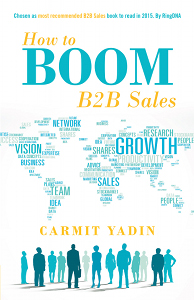
Carmit Yadin, author, How to Boom B2B Sales
Photos: Bohlsen Group
After years in the high tech industry Carmit Yadin began to work in sales. She had to learn how to be a salesperson on her own. In How to Boom B2B Sales (Archway Publishing, $11.99) she shares the insights she gained.
“With dedication, tons of mistakes, studying, asking questions, consulting people I knew and people I didn’t, I found my way,” Yadin said in a press release. “I don’t want anyone with a passion for sales to toil as I had to. Business is between people, not companies. We must provide solutions for these people and stop trying to sell if we want to ultimately boom sales.”
The 121-page book published in 2014 is divided into 22 chapters. In it she stresses that readers should focus on the customer’s financial results rather than their own, break the sales process into small pieces, pursue sales through social media, and develop B2B sales leads and qualify them before following up.
Yadin, a Tedx speaker, focuses her time on helping business leaders increase sales. She lives in Tel Aviv, Israel.
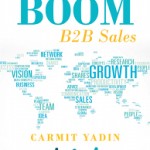
Click to buy How to Boom B2B Sales
Comments:
Filed Under: Books
Posted by Elena del Valle on September 25, 2015

On Romantic Love
Photo: Oxford University Press
Love is an emotion and as such may be rational or irrational. It may be experienced in degrees; it may be conscious and unconscious; and it may be controlled so that we may fall in and out of love. So says Berit Brogaard, professor of Philosophy, University of Miami.
In On Romantic Love Simple Truths About A Complex Emotion (Oxford University Press, $21.95) a hardcover 270-page book published this year, Brogaard attempts to get to the bottom of love’s many contradictions. The book includes black and white photos and original line drawings by illustrator Gareth Southwell.
Why does it matter? She explains that love, unlike marriage, seems to lead to happiness. The reference to love is not only about romantic love. Other forms of love such as friendship, parental, sibling, and companion also are linked to feeling blissful.
George E. Vaillant, a researcher she quotes in the book, says: “Happiness is love, Full stop.” He concluded after years of study on the subject that the ability to be intimate with another person was a strong predictor of health and happiness. The author believes that is too strong a statement. In its place she suggests instead that rational love leads to happiness.
Brogaard’s previous book, Transient Truths, was published in 2012. In her academic research she specializes in philosophy of language, philosophy of mind, and the cognitive sciences.
 Click to buy On Romantic Love
Click to buy On Romantic Love
Comments:
Filed Under: Books
Posted by Elena del Valle on September 18, 2015
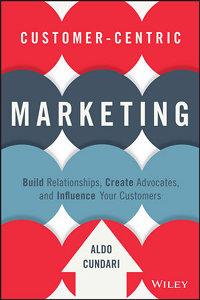
Customer-Centric Marketing
Photos: Wiley, Aldo Cundari
Marketer Aldo Cundari believes the lessons he learned while studying art in and exploring Italy during his formative years have served him well in his 30-year business life. In Customer-Centric Marketing Build Relationships, Create Advocates and Influence Your Customers (Wiley, $25), a 154-page hardcover book published this year, he shares some of the lessons he has learned through trial and error in his career. A main one of those is that marketing should always focus on the customer.
He strives to define the path customers follow and offer insights on customer experience, innovation, content, social media, and operating strategies to guide readers in formulating a marketing plan. He seeks to inform readers on ways to identify and influence new consumers, position their company within the marketplace, find and connect with individuals friendly to the brand and with the potential to spread its message. The book is peppered with graphs, illustrations and screen captures.
“There has been a great deal of change in the marketing world over the last 10 to 15 years,” Cundari said by email when asked why he wrote the book. “The tools and tactics that worked for the last 60 years are no longer effective. It was the information age that led to the onset of social technology that created freedom of choice and the empowered customer. This empowered customer holds all the power in how they will interact with a brand. So finding a new way to communicate to customer was essential. At the same time, new technology has complicated the decision on what is effective and works and what does not. My goal for the book was to put context to where we are and how to better understand the forces affecting marketing.”

Aldo Cundari, author, Customer-Centric Marketing
Regarding why companies engage in non customer centric marketing he said, “The current marketplace and how you reach customers has become more and more complicated, and without understanding of the forces affecting the challenges, I believe that marketers just default to using the tools and tactics that worked for them in the past, all with ever diminishing returns.”
Cundari explained that finding the data and cases studies that consistently demonstrate that the Customer-Centric Marketing approach works was the biggest challenge in writing the book.
“What I found was when you look deep enough you realize that there are many examples emerging,” he said. “All I applied is the logic and understanding behind the forces, affecting success. What most surprised me was when you remove all the shinny new technology things that supposedly help marketers entice customer and you peel back all the new terminology that has layered confusion over understanding, you end up in the same place we have always been, ‘human nature is, what it is’, you have a person with a need, so why not fill that need.”
Cundari is chairman and chief executive officer of Cundari Group. His firm specializes in integrated marketing, branding and design, and interactive and software development services powered by research insights.
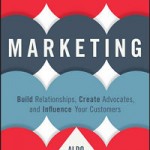
Click to buy Customer-Centric Marketing
Comments:
Filed Under: Books
Posted by Elena del Valle on August 28, 2015

Dreaming Forward
Photos: Martha Casazza
Martha Casazza, author and education scholar, wanted to know about the dreams of America’s Hispanics. In Dreaming Forward Latino Voices Enhance the Mosaic (iUniverse, $19.95), a softcover 242-page book published this year, she showcases the stories of 19 Hispanics in an effort to provide a platform “for people who have faced disappointment and fear in their earnest desire to dream forward in the U.S. and are committed to effecting change in their community.”
The project, originally supported by the university where she worked, required several years to be completed. The author funded it herself.
“When I was a university dean, I was fortunate enough to get involved with the Pilsen community on the south side of Chicago,” she said when asked why it was that she chose the group that she did for the stories. “Pilsen is primarily a Mexican-American community. I was never a sit-behind-the- desk administrator, and I worked closely with a few community organizers to organize the first Tardes en el Zocalo weekend event in Pilsen to bring neighbors together. I was really impressed at how important the idea of community was in Pilsen. From this experience, I came to know students and organizers from this area and worked closely to create more opportunities for them to attend college and succeed.”
In the book, she shares the stories of Mexican American individuals captured via in person interviews in their place of choice by the author and her colleagues. They originally collected 48 stories. Save for one all the ones in the book were told in English over a four year period. Each story ends with a Reflections section designed to elicit big picture thinking about the overall community.

Martha Casazza, author and education, scholar
“We desperately need to engage in a national dialogue about how to best foster and sustain healthy urban communities, especially as our cities become home to a more diverse array of people than ever before,” Casazza said in a press release. “By working inside the community and listening to their voices, I can see the roots of a healthy, sustainable Latino community here in the U.S. and in my own city of Chicago.”
When asked about the results, the author said, “The greatest reward was being trusted by individuals to tell their stories. The book reflects authentic voices and hopefully helps to personalize the struggles of a vibrant and passionate community in urban American where there is a strong commitment to dream forward through purposeful action.”
Casazza has a Doctorate in Education and is a founding partner of TRPP Associates, LLC, an educational consulting business that focuses on maximizing learning environments. She is also a member of the Fulbright Association as well as the Board of Directors of Heartland Alliance.

Click to buy Dreaming Forward
Comments:
Filed Under: Books
Posted by Elena del Valle on August 14, 2015
The Rise of the Platform Marketer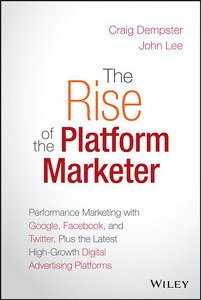
The Rise of the Platform Marketer
Photo: Wiley
Craig Dempster, and John Lee, both executive vice presidents at Merkle, a marketing agency, believe success in marketing today depends on technology and scale. In The Rise of the Platform Marketer: Performance Marketing with Google, Facebook, and Twitter, Plus the Latest High-Growth Digital Advertising Platforms (Wiley, $30), a 228-page hardcover book published this year, they discuss their strategies and the reasoning behind it.
“The opportunity of addressability at scale makes it an incredibly exciting time to be a marketer,” Dempster said in press materials. “These audience platforms enable us to connect with customers in more targeted, customizable, intelligent, and measurable ways, so that every customer receives an ideal experience, perfectly suited to their needs, devices, preferred channels, and more.”
In the book, meant as a foundation for their company’s 12 annual Performance Marketing Executive Summit, they propose nine competencies meant to span across data, execution, and the enabling technology. They believe mastering them will allow marketers to create, deliver, measure, and optimize customer-centric experiences across digital platforms. The authors did not reply to questions submitted via their publisher.
“The Platform Marketer isn’t an individual per se, but more a collection of skills that encompass many different disciplines,” Lee said in press materials. “When an organization can learn how to apply these skillsets, their ability to connect with customers and drive revenue grows enormously.”
The authors believe success driving digital performance requires expertise in data, analytics, and audience experience as well as an understanding of the new audience platforms. The nine competencies they point out as necessary are: audience management, identity management, consumer privacy and compliance, technology, platform utilization, measurement and attribution, media optimization, channel optimization, and experience design and creation.
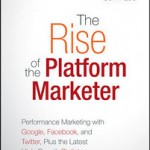
Click to buy The Rise of the Platform Marketer
Comments:
Filed Under: Books
Posted by Elena del Valle on July 31, 2015

GALA Advertising Law Book
Photo: Global Advertising Lawyers Alliance (GALA)
For marketers planning a multi-country ad campaign it may be useful to become familiar with the laws in the countries of their launch. For example, in the United States while there are no advertising practices prohibited outright there are restrictions, limitations, disclosure requirements and “medium- and industry-specific laws and regulations” on various advertising practices, according to the Global Advertising Lawyers Alliance (GALA).
This year, the Global Advertising Lawyers Alliance (GALA) published the first edition of the GALA Advertising Law: A Global Perspective, an 845-page book about international advertising, marketing and promotion laws in 56 countries from Argentina to Zimbabwe. The book is available via Amazon.com as a two volume publication (the review copy was one comprehensive digital document). Advertising Law I features information in alphabetical order by country from Argentina to Japan. Advertising Law II features the remaining countries from Kenya to Zimbabwe.
Organization lawyers wrote the book to educate in-house counsel, marketing professionals, agency executives, and firm lawyers about advertising law around the world. A list of the contributors and their firms appears in the back of the book.
Each entry outlines issues such as Advertising Framework, Self-Regulatory Framework, Advertising Law Basics, Price Advertising, Prohibited Practices, Sponsor/Advertiser Identification, Branded Content, Social Media, Rights of Privacy/Publicity, Special Clearance, Cultural Concerns, and Miscellaneous.
The United States section was co-written by attorneys from three New York law firms, Ronald R. Urbach, Joseph J. Lewczak and Allison Fitzpatrick from Davis & Gilbert, Rick Kurnit and Jeffrey A. Greenbaum from Frankfurt Kurnit Klein & Selz, and Douglas J. Wood, Joe Rosenbaum, John Feldman & Stacy Marcus from Reed Smith.

Click to buy Advertising Law I: A Global Legal Perspective: Volume I: Argentina – Japan (Advertising Law: A Global Legal Perspective) (Volume 1)
and
Advertising Law II: A Global Legal Perspective: Volume II: Kenya – Zimbabwe (Advertising Law: A Global Legal Perspective ) (Volume 2)
Comments:
Filed Under: Books
Posted by Elena del Valle on July 24, 2015
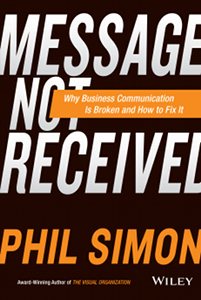
Message Not Received
Photos: book cover Wiley/Luke Fletcher, author Sean Sunkel
We often blame misunderstanding across cultures and languages on communication. Even among speakers of the same language sometimes there are formidable barriers. Cultural differences, abbreviated messages in limited length media such as emails and social media can lead to truncated or unclear messages. Such communications issues and at times failures represent business costs. The McKinsey Global Institute report estimate for the cost of bad communication is nearly $1 trillion (referenced in Chapter 4 of Message Not Received).
Phil Simon, who specializes in technology and has authored several books, is convinced communication within businesses is not working properly. In Message Not Received Why Business Communication Is Broken and How to Fix It (Wiley, $35), a 236-page hardcover book published this year, he explains his concerns and offers solutions.
In Chapter 4, he says that although he considers emails indispensable there are issues related to that type of message that users are often unaware of, such as its lack of nuances and emotional depth. Because of that they are sometimes not the most appropriate method for complex discussions. He points out that emails may also be the cause of legal concerns, foster internal competition, be too copious to process and manage, and have poor search functions.
“I knew that e-mail fails us on several levels, but I was unaware of the extent of the problem,” Simon said by email. “As I discuss in the book, e-mail gives the false appearance of one-to-one, in-person communication. For instance, consider a 2006 series of studies by two psychologists, Justin Kruger, PhD of New York University and Nicholas Epley of the University of Chicago. In short, Kruger and Epley wanted to determine if people were as good as they thought they were at discerning the subtext of a message. Participants were only able to accurately communicate sarcasm and humor in barely half—56 percent—of the e-mails they sent. And if that isn’t bad enough, most people had no idea that they weren’t making themselves understood.”

Phil Simon, author, Message Not Received
When asked why he wrote the book he replied, “I truly believe that we’ve reached a tipping point, and my research confirmed as much. Employees have never been more overwhelmed, the subject of Chapter 2. They’re being asked to integrate more content, more messages. They’re checking e-mail on weekends, holidays, and vacation (when they take it). They’re constantly on call, barely able to keep their heads above water.
Fortunately, there’s a two-fold solution, and I didn’t see any book out there that attacked this problem from this particular angle. First, we can embrace simpler language. There’s no reason to use terms “value-add use cases” and other linguistic atrocities. Beyond that, everything need not be communicated via e-mail. New, truly collaborative tools like HipChat, Smartsheet, and scores of others make it easier than ever to communicate effectively. And let’s not forget the ability go old school. Sometimes, an in-person meeting or phone conversation is the best way to proceed. Far too many of us seem to have forgotten that.”
The book is divided into eight chapters within four main parts: Worlds Are Colliding; Didn’t You Get That Memo? Why We Don’t Communicate Good at Work; Message Received; and What Now?
“Many business folks routinely forget their audiences. They forget —or have never heard of—the curse of knowledge. We’ve all seen IT people who seem to speak a different language when dealing with non-technical employees. What happens?” he asked. “Employees roll their eyes, tune out, or simply don’t understand what’s taking place. On the web, there’s no shortage of mind-numbing, vacuous marketing copy. Marketers and salespeople often speak in buzzwords and then wonder why their prospective clients don’t pull the trigger. Rare is the person who communicates perfectly, myself included. We all would benefit from using simpler language and minimizing our e-mails.”
Simon advises organizations about communication strategy, data and technology. He is also author of The Age of the Platform.
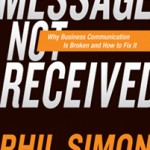
Click to buy Message Not Received
Comments:
Filed Under: Books































